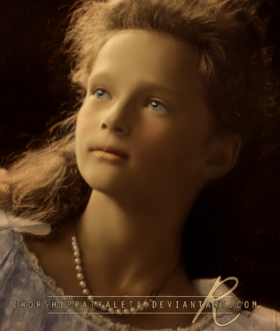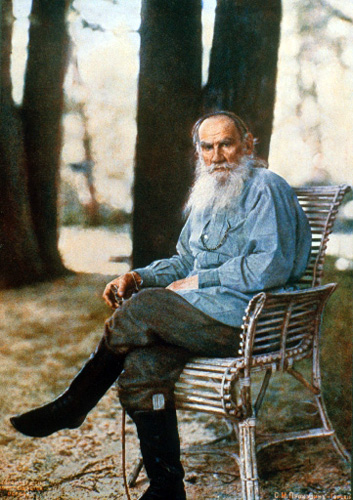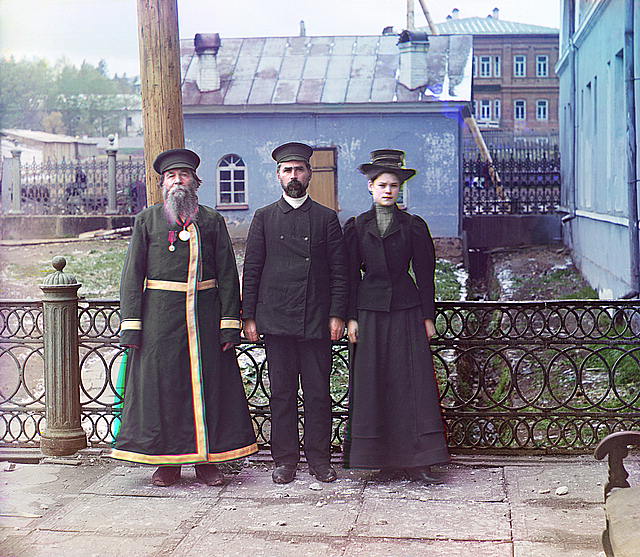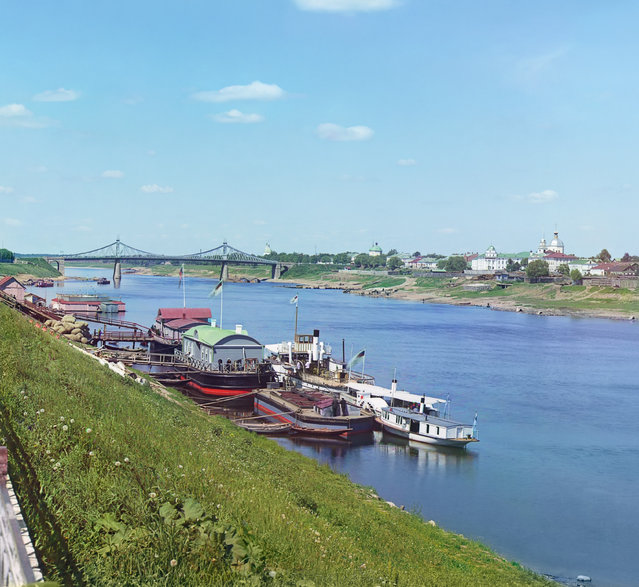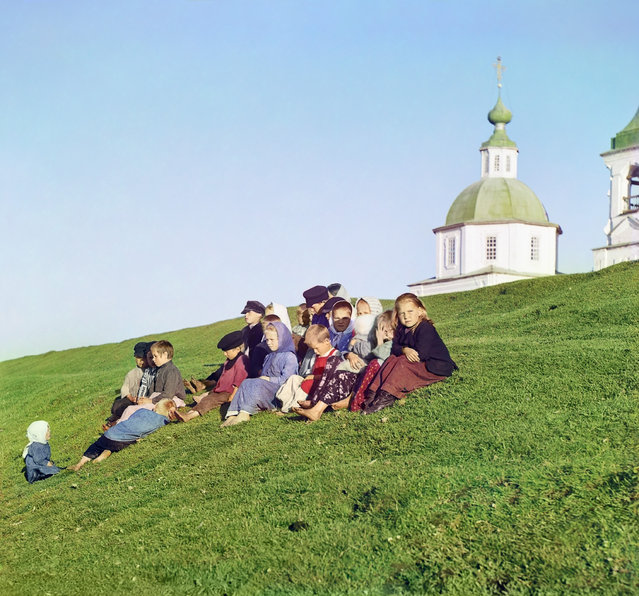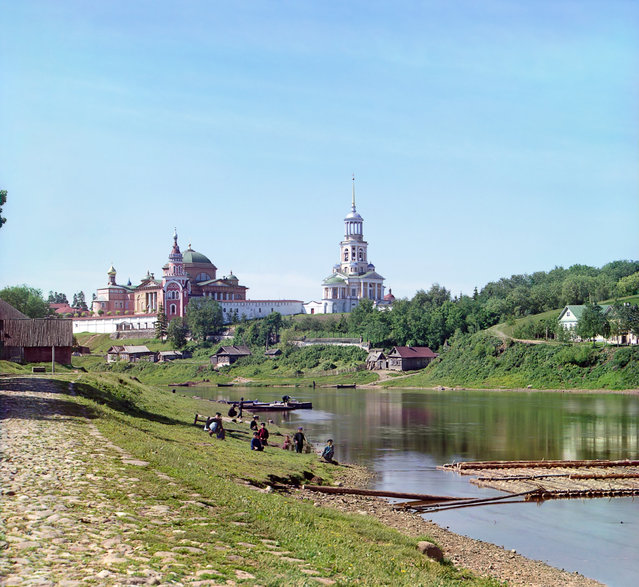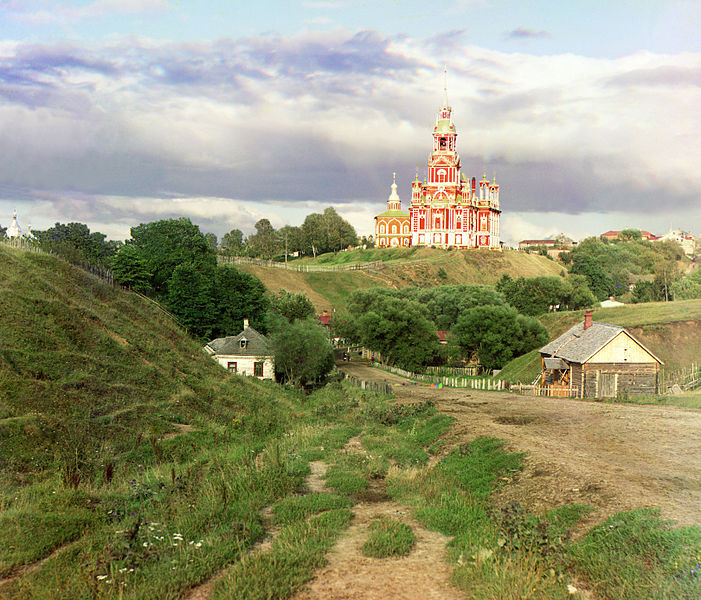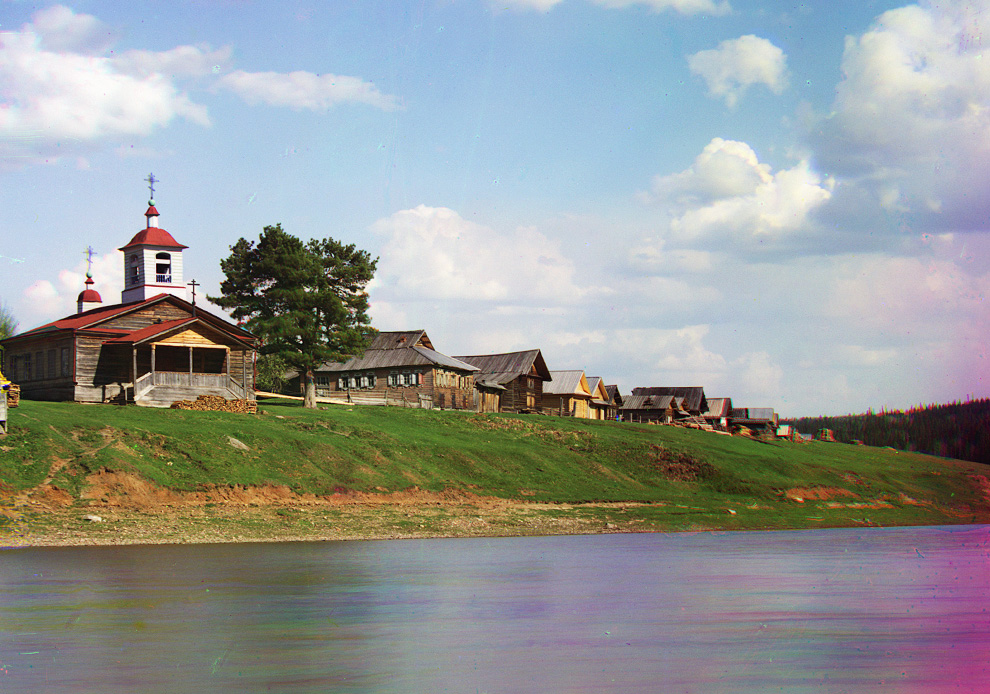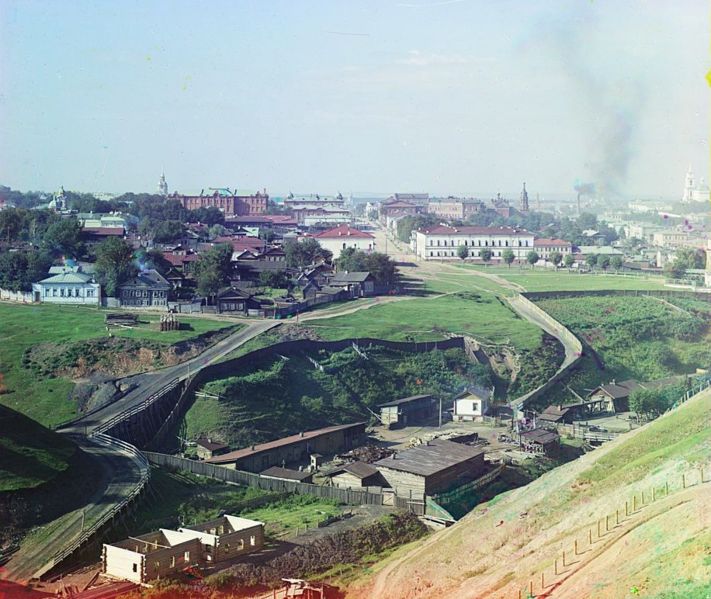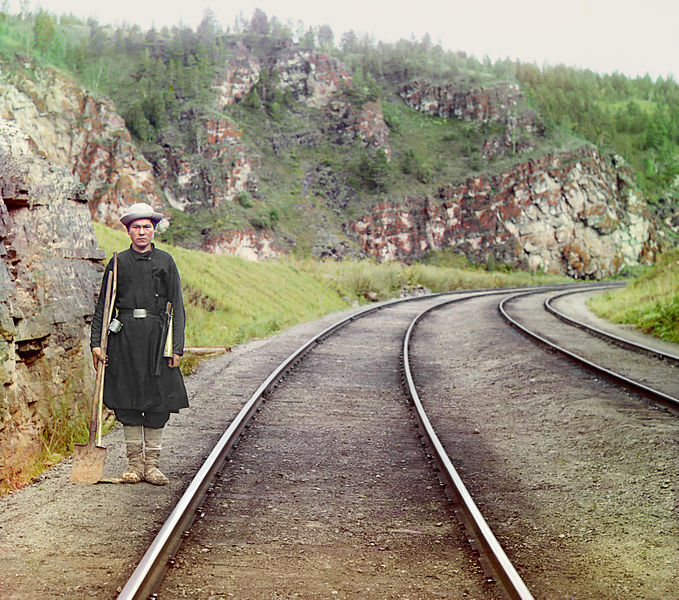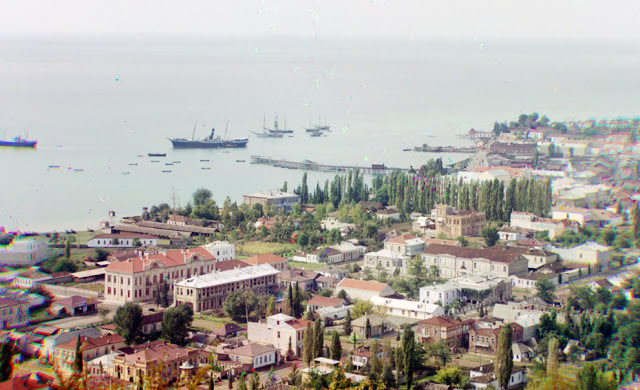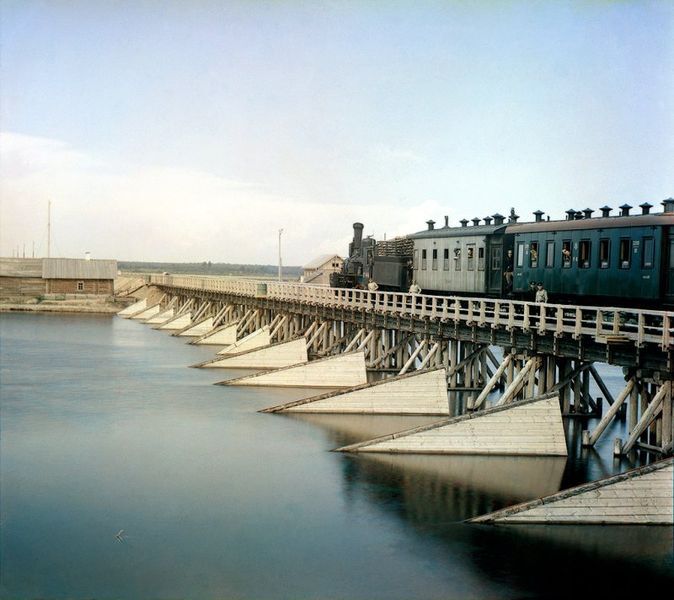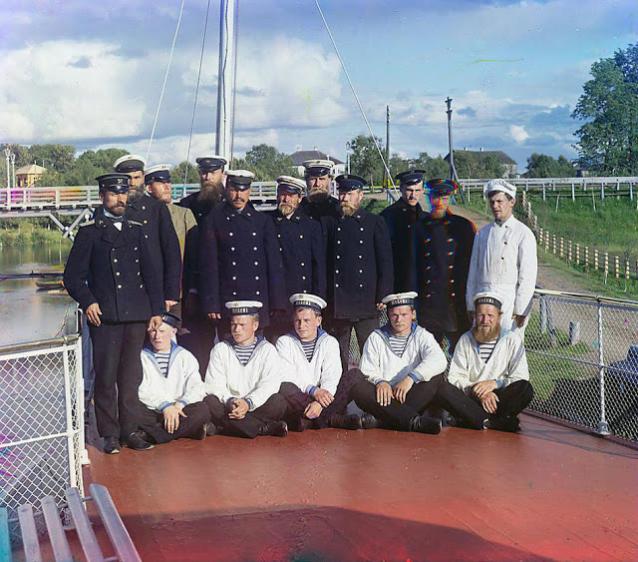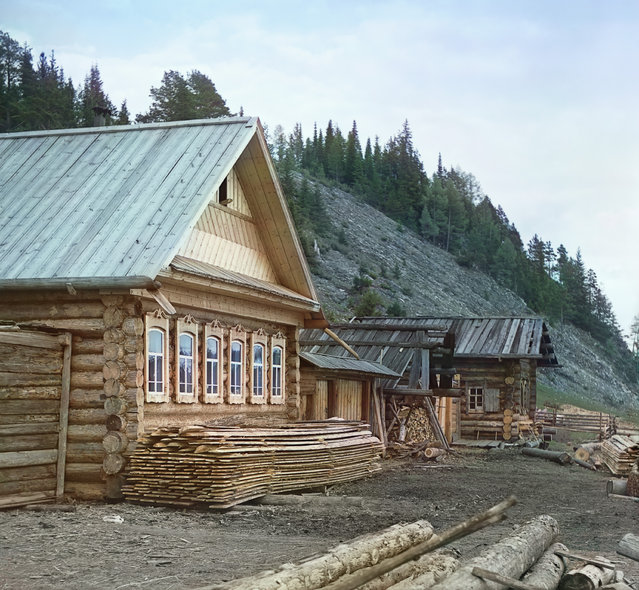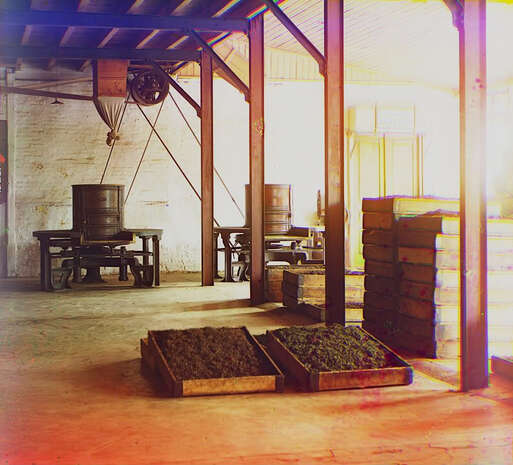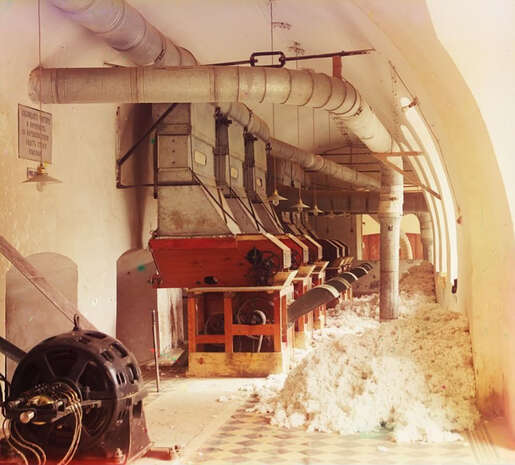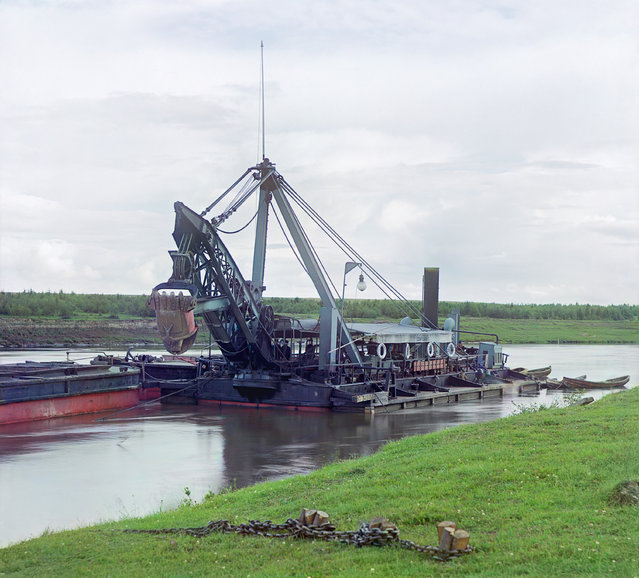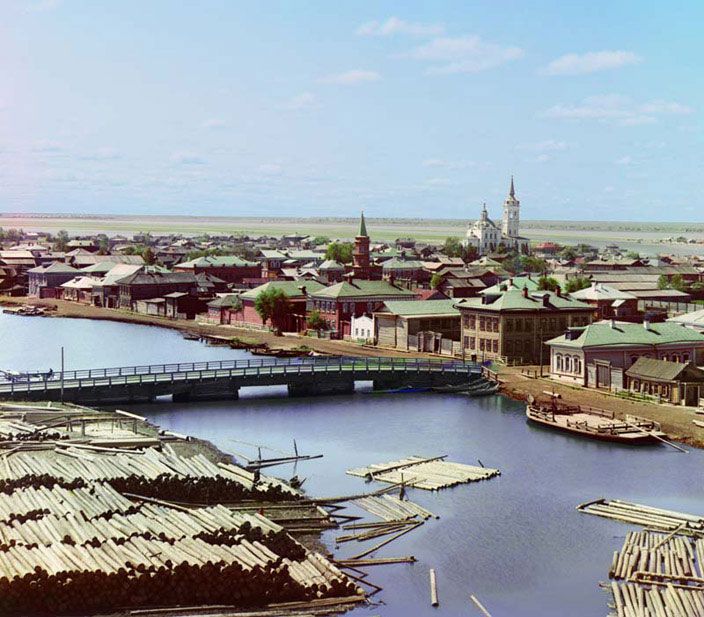-
La villa Ipatiev rasée par le Politburo
27.07.2012, 18:16, heure de Moscou Photo:http://srn-feodosia.ru
Photo:http://srn-feodosia.ruLe 27 juillet 1977 la décision de raser la Villa Ipatiev était prise et l’ordre donné. L’instigateur était Michel Souslov, membre du Politburo et personnage méconnu de l’époque soviétique qui fut pourtant l’un des plus sombres et des plus terribles de son histoire. Ainsi finissait la villa Ipatiev où avaient été assassinés 59 ans plus tôt Nicolas II et la famille impériale.
Parmi d’autres lieux dramatiques qui furent également détruits, comme par exemple à Paris la fameuse prison du Temple, la Villa Ipatiev reste un symbole de l’horreur et de la tyrannie bolchevique, la famille impériale y étant séquestrée puis exécutée sur l’ordre de Lénine. Elle devait son nom d’Ipatiev à son ancien propriétaire, l’ingénieur militaire Nicolas Nicolaïevitch Ipatiev.
Elle fut choisie par les Bolcheviques dans le printemps 1918, pour accueillir provisoirement les Romanov et le Tsar déchu. Elle avait été construite seulement en 1897 dans le centre historique de la ville par un autre ingénieur avant de passer dans les mains d’un autre propriétaire puis de Nicolas Ipatiev en 1908.

C’était une maison bourgeoise et elle fut bien entendu promptement réquisitionnée par les autorités bolcheviques locales.
La zone d’Ekaterinbourg était à cette époque une région fortement tenue par les communistes, car il s’agissait d’une région minière où la propagande bolchevique et les misères de la condition de mineurs, que nous pouvons bien nous imaginer comme similaires, voire pires qu’en France, avaient créé un terreau propice.

C’est dans ces conditions que la maison fut donc réquisitionnée le 27 avril 1918, son propriétaire étant tout bonnement expulsé.
La maison fut transformée en véritable forteresse par les bolcheviques, qui construisirent une palissade de bois tout autour et disposèrent plusieurs mitrailleuses sur et dans la maison. La famille impériale y fut conduite séparément le 30 avril puis le 23 mai 1918, dans l’attente de la suite.
Une garde permanente commandée par le commissaire politique Iakovlev et le commandant Avdeïev fut installée dans les murs mêmes de la maison et donnèrent lieu immédiatement à de nombreuses vexations. La famille impériale qui allait subir le martyr était la cible d’insultes, de mesquineries et de vexations permanentes de la part des gardes jusqu’au drame final qui eut lieu dans la nuit du 16 au 17 juillet 1918. La famille, un médecin et plusieurs domestiques étaient impitoyables massacrés dans la cave de la Villa.

La ville ayant été prise par l’Armée blanche de Koltchak quelques temps après et par le corps d’armée tchèque du général Radola Gajda, fut occupé par l’Etat-major de ce dernier et les lieux du massacre mis sur scellés. La défaite finale des blancs et leur reflux en 1919 et 1920, devait plonger la maison Ipatiev dans l’oubli de l’histoire.

Etrangement, ni Lénine, ni Staline n’ordonnèrent sa destruction, comme ce fut le cas de la prison du Temple à Paris, elle restait pourtant le symbole de l’horreur et un lieu potentiel de pèlerinage pour les monarchistes et les orthodoxes, mais il fallut attendre l’époque de Léonid Brejnev pour qu’à nouveau la maison attire l’attention des communistes.

L’homme qui devait présider à sa fin fut Mikhaïl Souslov, idéologue du parti communiste, membre du puissant Politburo du Parti communiste et Secrétaire du Parti communiste de l’Union Soviétique qu’il avait rejoint dès 1921. Il était né à la fin de l’année 1902 et se trouvait donc trop jeune pour prendre une part active à la Révolution de 1917, mais il devait prendre très vite une importance réelle, une véritable éminence grise.

Durant leur captivité, les Romanov sont emprisonnés dans trois lieux différents. De mars à août 1917, le tsar et les siens sont assignés à résidence dans leur résidence principale de Tsarskoie-Selo, le palais Alexandre. En août, ils sont transférés à Tobolsk et logent dans la Maison du Gouverneur.
En avril 1918, le couple impérial et leur fille Maria sont envoyés à Ekaterinbourg et résident dans la Villa Ipatiev, aussi connue sous le nom de "maison à destination spéciale".
(Ci-dessous se trouve une carte de Russie où j'ai fait apparaître les villes où les Romanov ont été emprisonnés - Tsarskoie-Selo se trouve à côté de Saint-Pétersbourg).
Un moment professeur d’université, il organise sous la houlette de Staline les purges du Parti dans l’Oural de 1933 et 1934, premières et terribles responsabilités, avant d’être nommé en récompense de « ses efforts » au comité central du Parti communiste en 1939.
Son zèle et sa froideur devait le conduire à continuer d’exécuter les besognes « difficiles », notamment durant la Seconde Guerre mondiale où il fut en charge de la déportation des tchétchènes et de diverses communautés islamiques (déjà !) des régions du Caucase, qui auraient pu se trouver favorable à l’arrivée des troupes allemandes durant l’été 1942.

S’étant acquitté de sa tâche ave brio, Staline devait encore lui confier après 1944 la répression en Lituanie, lors de la libération de ce petit état balte par les troupes de l’Union soviétique.
La population locale eut beaucoup à souffrir de sa rudesse et de son fanatisme, des villages entiers furent liquidés et déportés en Sibérie.
Ayant échappé à la vindicte de Staline et à sa paranoïa maladive, Souslov fut promu en 1952 membre du tout puissant Politburo, place où il devait jouer un rôle très important jusqu’aux portes de la mort.
C’est en partie grâce à son soutien que Léonid Brejnev put mettre à l’écart et évincer Khrouchtchev en 1964.
A cette époque, il était réellement devenu l’idéologue impitoyable du Parti communiste, et fut le mentor de personnages aussi célèbres que Youri Andropov ou encore d’un certain Mikhaïl Gorbatchev…
C’est sous « son règne » idéologique incontesté que la maison Ipatiev est donc rasée un jour de juillet 1977, alors que le régime soviétique avait déjà connu son âge d’or mais pouvait voir apparaître certaines fissures dans le système. Souslov disparaissait en janvier 1982, Brejnev le rejoignant dans la tombe quelques mois plus tard en novembre.
La mort des deux grandes figures du Parti, et en particulier de l’idéologue Souslov devait déclencher une lutte âpre pour le pouvoir. Bien que les preuves historiques manquent et qu’un habile nettoyage des archives empêchera d’établir la vérité, Souslov, Andropov et Brejnev sont peut-être à l’origine de l’attentat du 13 mai 1981 contre le Pape polonais Jean-Paul II, une « anecdote historique croustillante » de plus dans cette triste histoire.
Toutefois en rasant la villa Ipatiev, Souslov et ses complices ne pouvaient malgré toute leur bonne volonté effacer le crime odieux commit dans ses murs. L’ironie du sort, fut que la destruction de ce lieu historique fut confié aux soins d’un certain Boris Eltsine alors Premier secrétaire du parti communiste d’Ekaterinbourg (qui se nommait Sverdlovsk de 1924 à 1991).
La maison jusqu’au bout aura été mêlée à de grands personnages de l’histoire mais les pelleteuses et les bulldozers du Politburo auront toutefois privée la Russie d’un lieu qui serait (tout comme la prison du Temple à Paris), un formidable lieu touristique, un lieu emblématique d’une extraordinaire portée. Souslov ne pouvait prévoir la faillite totale de son idéologie et la continuité de la maison Ipatiev comme lieu de repentance.
Le terrain fut en effet remis par les autorités russes à l’Eglise Orthodoxe dès 1990. Elle lança en l’an 2000 les travaux d’une Eglise, l’Eglise de tous les Saints qui fut consacrée en 2003. Ainsi malgré sa destruction, la maison Ipatiev est bien encore debout, tout un chacun peut s’y rendre pour s’y recueillir, et elle reste à jamais dans les cœurs russes ou de ceux des amis de la Russie. /L
SOURCES
LA VOIX de la RUSSIE -
http://french.ruvr.ru/2012_07_27/villa-ipatiev/

 votre commentaire
votre commentaire
-

Sergey Prokudin-Gorsky, photographer 1863-1944
Sergey Prokudin-Gorsky, Russian photographer, pioneer of color photography. He used a camera that took a series of three monochrome pictures in sequence, each through a different-colored filter. By projecting all three monochrome pictures using correctly colored light, it was possible to reconstruct the original color scene. Any stray movement within the camera's field of view showed up in the prints as multiple "ghosted" images, since the red, green and blue images were taken of the subject at slightly different times. Self-portrait on the Karolitskhali River, ca. 1910. Prokudin-Gorskii in suit and hat, seated on rock beside the Karolitskhali River, in the Caucasus Mountains near the seaport of Batumi on the eastern coast of the Black Sea
Self-portrait on the Karolitskhali River, ca. 1910. Prokudin-Gorskii in suit and hat, seated on rock beside the Karolitskhali River, in the Caucasus Mountains near the seaport of Batumi on the eastern coast of the Black Sea
Le photographe s’appelle Sergei Mikhailovich Prokudin-Gorsky, il était chimiste et inventeur d’un procédé de photographie en couleur qui en a fait le pionnier en cette matière .

Although his main job (Demidov House) was located in St. Petersburg, Prokudin-Gorsky settled in Gatchina, where his three children were born Dmitry (1892), Catherine (1893) and Michael (1895).
C’est à ce titre qu’il fut engagé par le Tsar Nicolas II pour en devenir le photographe officiel, et le Tsar, qui n’était en mesure de sillonner l’immense l’Empire Russe du temps, lui a offert tous les moyens ( train particulier , instruments photographiques..) pour lui permettre de voyager librement de la Baltique au Pacifique et dans tous les recoins de l’Empire.Leo Tolstoy in Yasnaya Polyana 1908
C’est ainsi que, de 1905 à 1917, Prokudin-Gorski a ramené de ses voyages des milliers de plaques photographiques sur les villes , les campagnes , les peuples au travail, les églises, les créations artistiques et industrielles de l’Empire (notamment les photos de Tolstoi) revélant sa marche vers le progrès avant que le bolchevisme n’amène avec ses massacres, ses goulags etc la misère et la régression que nous savons …
La révolution de 1917 et le guerre civile ont chassé Prokudin de Russie et c’est en passant par le Norvège puis l’Angleterre, qu'il est venu se réfugier en France non sans emporter des caisses pleines des milliers de plaques photographiques qu’il avait réalisées.
Sergei Prokudin-Gorskii: Spinning yarn in the village of Izvedovo, 1910
Il a vécu pauvre et malade en France de 1921 à Aout 1944, ignoré de nous et reconnu seulement par la communauté des réfugiés russes.
Juste après la guerre la Américains, plus malins que nous, on racheté à sa famille toute la collection de ces plaques pour en faire un des trésors de la Librairie du Congrès ( Librairie de la Chambre des Députés U.S), quand à Prokudin –Gorski il repose chez nous dans le cimetière russe de Sainte Geneviève des Bois .
Habituée que j’étais à ne voir la Russie de cette époque qu’à travers les lugubres clichés noir et blancs que nous en donnait la propagande bolchévique, la première fois que j’ai découvert les clichés de Prokudin-Gorski j’ai été suffoqué devant leur beauté et non moins devant la beauté ignorée de ce pays qu’il nous découvrait .
Et si je peux me permettre une suggestion après la magnifique présentation que vous venez de faire du Tsar Nicolas II et de sa famille, je trouverais juste et bon de présenter cette Russie méconnue d’avant la révolution que les photos de Prokudin-Gorski nous ont léguée .
Vous trouverea tous les documents ici :
****http://www.prokudin-gorsky.org/rightpages.php?lang=en&fname=bio
SHORT BIOGRAPHY OF S. M. PROKUDIN-GORSKY
S. M. Prokudin-Gorsky is much more than just a talented scientist-inventor or an outstanding photographer, he is the author of the true miracle that will never cease to amaze people.
***
Sergueï Prokoudine-Gorski
http://fr.wikipedia.org/wiki/Sergue%C3%AF_Prokoudine-Gorski
***
EXPOSITION RÉCENTE DES PHOTOS DE PROKUDIN-GORSKI A LA LIBRAIRIE DU CONGRÈS :
The Empire That Was Russia: The Prokudin-Gorskii Photographic Record Recreated
http://www.loc.gov/exhibits/empire/
Group (Sergeĭ Mikhaĭlovich Prokudin-Gorskiĭ (R) and two men in Cossak dress (?) seated on the ground). Russia, Arkhangelsk province, Kem' uyezd (district), Nadvoitsy village and outskirts, 1916.
City of Aleksandrov. General view of Trinity Monastery. Russia, Vladimir Province, Alexander County, Alexandrov, 1911. Corner of the Likanskii Palace 1910Corner of a Dacha 1910City of Aleksandrov 1910
Corner of the Likanskii Palace 1910Corner of a Dacha 1910City of Aleksandrov 1910
Razsoshka River, flowing into the Chusovaia River at the village of Verkhnie Gorodki. Russia, Perm Province, Perm uyezd (district), Verkhnie Gorodki (submerged), 1912.Fishing Settlement 1915 Этюд на речке Кумса / At the river Kumsa - 1915
Этюд на речке Кумса / At the river Kumsa - 1915
Village of Rodina (Chusovaia River). Russia, Perm Province, Kungur uyezd (district), Rodina (uninhabited), 1912.


General view of the Zlatoust plant and Trinity Cathedral. Russia, Ufa Province, Zlatoust uyezd (district), Zlatoust town, September 1909.
View from the bell tower of the Trinity cathedral (of the Trinity Monastery) on Cathedral Square in Belgorod, during the celebration of the canonization of Ioasaf of Belgorod, September 4, 1911. Russia, Kursk province, Belgorod town.
Chapel from the time of Peter the Great (1672–1725), near Kivach waterfall. Russia, Olonets province, Petrozavodsk uyezd (district), Kivach, 1916.
Fly agaric (“Among the moss”). Russian Empire, Grand Duchy of Finland, Place unknown. Between 1903 and 1904.
Sergei Prokudin-Gorskii: Church of the Holy Mother of God, Tobolsk, Russia, 1912
A. P. Kalganov with his Son and Granddaughter 1910
A. P. Kalganov poses with his son and granddaughter for a portrait in the industrial town of Zlatoust in the Ural Mountain region of Russia. The son and granddaughter are employed at the Zlatoust Arms Plant--a major supplier of armaments to the Russian military since the early 1800s. Kalganov displays traditional Russian dress and beard styles, while the two younger generations have more Westernized, modern dress and hair styles.

View of Suzdal from the bell tower of the Rizpolozhenskii. Russia, Vladimir Province, County Suzdal, Suzdal, 1912.
View of the railroad, city of Vladimir, Kliazma River, and water-meadows, 1911.
View of the city of Tobolsk from Assumption Cathedral from the northwest. Russia, Tobolsk Province, Tobolsk uyezd (district), Tobolsk town, 1912. Suburb of the city of Perm called Razgulyai 1910
Suburb of the city of Perm called Razgulyai 1910
Chapel for water blessing, in the village of Deviatiny. Russia, Olonets province, Vytegra county, Deviatiny, 1909. Sergei Prokudin-Gorskii: View of Suzdal along the Kamenka River, 1912
Sergei Prokudin-Gorskii: View of Suzdal along the Kamenka River, 1912
Austrian prisoners of war near a barrack. Russia, Olonets province, Petrozavodsk uyezd (district), Kivach station, 1916.Russian children sitting on the side of a hill near a church and bell tower in the countryside near White Lake, in the north of European Russia. The picture was taken at the church in the background Pyatnitskaya Belozersk (not preserved). Novgorod Province, White Lake County, 1909.
Village of Kolchedan. Russia, Perm Province, Kamyshlov uyezd (district), Kolchedanskoe village, 1912.
On the Sim River near the Asha-Balashovskii Station. Russia, Ufa Province, Ufa uyezd (district), Asha town, 1910. Sergueï Mikhaïlovitch Prokoudine-Gorski Prononciation (en russe : Сергей Михайлович Прокудин-Горский), né le 30 août 1863 à Founikova Gora (gouvernement de Vladimir, Empire russe) et mort le 27 septembre 1944 à Paris (France), a consacré sa carrière de chimiste puis de photographe à la photographie couleur. Il a laissé un témoignage unique sur la Russie du début du XXe siècle.
Sergueï Mikhaïlovitch Prokoudine-Gorski Prononciation (en russe : Сергей Михайлович Прокудин-Горский), né le 30 août 1863 à Founikova Gora (gouvernement de Vladimir, Empire russe) et mort le 27 septembre 1944 à Paris (France), a consacré sa carrière de chimiste puis de photographe à la photographie couleur. Il a laissé un témoignage unique sur la Russie du début du XXe siècle. 1909
1909 1909
1909




 Boris and Gleb Monastery, from the BridgeBoris and Gleb Monastery 1910
Boris and Gleb Monastery, from the BridgeBoris and Gleb Monastery 1910
City of Rzhev. Prince Fedor's side (of the city) with the Holy Protectoress Mother of God Church. Russia, the Tver province, Rzhev, 1910.
Cemetery Church of the Exaltation of the Cross. Russia, Tver Province, Ostashkov county, Ostashkov, 1910.
Rampart near the Boris-Gleb Monastery. Russia, the Tver province, Torzhok, 1910.
Site of the source of the Western Dvina near the village of Kariakino three versts from Lake Peno in Tver Province, Ostashkov District. Volga River Region, 1910. 1909
1909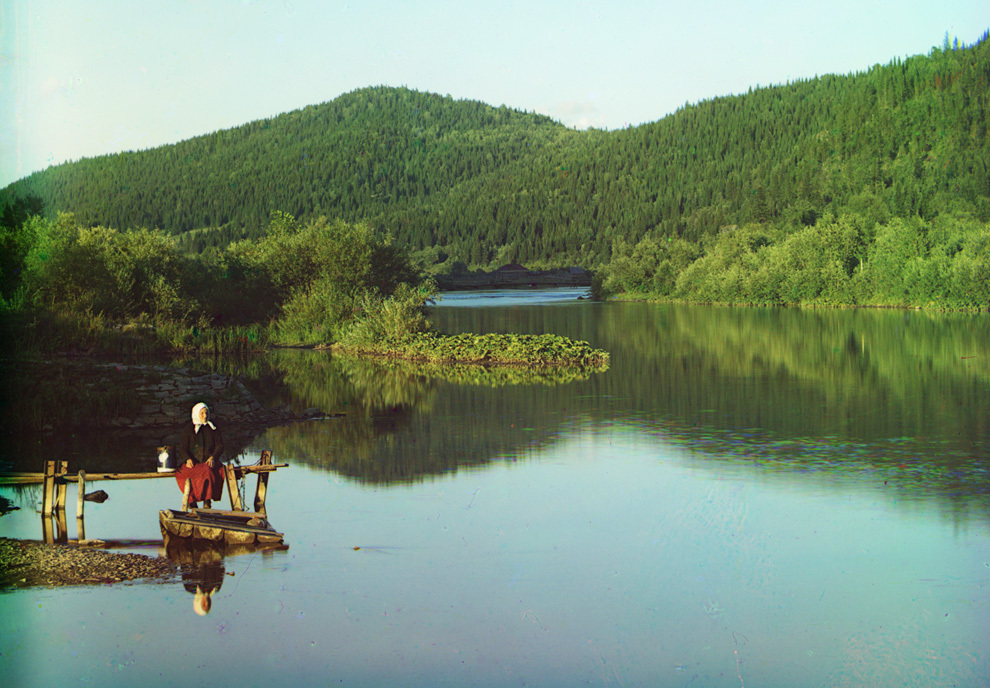 A woman is seated in a calm spot on the Sim River, part ofthe Volga watershed in 1910
A woman is seated in a calm spot on the Sim River, part ofthe Volga watershed in 1910 Sergey Mikhaylovich Prokudin-Gorsky / Monastery haying, Leushinsky Monastery, 1909Sergey Mikhaylovich Prokudin-Gorsky / Forming art castings. Kasli, 1910View of Tiflis (Tblisi), Georgia from the grounds of Saint David Church, ca. 1910
Sergey Mikhaylovich Prokudin-Gorsky / Monastery haying, Leushinsky Monastery, 1909Sergey Mikhaylovich Prokudin-Gorsky / Forming art castings. Kasli, 1910View of Tiflis (Tblisi), Georgia from the grounds of Saint David Church, ca. 1910
Village of Deviatiny and the Saint Boris dam. Russia, Olonets province, Vytegra county, Deviatiny, 1909.
Hotel of A. G. Barskov (formerly of Fedukhin-Pozharskii). Russia, Tver province, Torzhok town, 1910.
Riazan. The Trubezh River and the Cathedral of Christ's Nativity. Russia, Ryazan Province, Ryazan, 1912.
Staritsa. View from the Cathedral of Sts. Boris and Gleb. Russia, Tver province, Staritsa uyezd (district), Staritsa town, 1910.
Riazan. General view from the bell tower of Assumption Cathedral from the northwest. Russia, Ryazan Province, Ryazan, 1912.
Avraamievskii Monastery. Russia, Smolensk Province, Smolensk, 1912.Mugan. Settler's family. Settlement of Grafovka, Baku province, 1912
Tea factory in Chakva. Chinese foreman Lau-Dzhen-Dzhau. Russia, Kutaisi province, Batumi District, Chakva, 1912. Distributing of mineral water. Borzhom (Men pushing carts laden with bottles while others stand and watch; to the side are bundles of packed bottles). Russia, Tiflis province, Gori district, Borjomi, 1912
Distributing of mineral water. Borzhom (Men pushing carts laden with bottles while others stand and watch; to the side are bundles of packed bottles). Russia, Tiflis province, Gori district, Borjomi, 1912
Sergey Mikhaylovich Prokudin-Gorsky / At the stubble-field, 1909 Log sawing. Kuzminskoe village along the Oka River. 1912 // His subjects ranged from the medieval churches and monasteries of old Russia, to the railroads and factories of an emerging industrial power, to the daily life and work of Russia's diverse population.
Log sawing. Kuzminskoe village along the Oka River. 1912 // His subjects ranged from the medieval churches and monasteries of old Russia, to the railroads and factories of an emerging industrial power, to the daily life and work of Russia's diverse population. Fishing settlements on Lake Seliger. 1910 // Sergey Prokudin-Gorsky finally settled in Paris in 1922. He set up a photo studio there together with his three adult children.
Fishing settlements on Lake Seliger. 1910 // Sergey Prokudin-Gorsky finally settled in Paris in 1922. He set up a photo studio there together with his three adult children. Fisherman on the Iset River, Ural mountains. 1910 // Photographs of Prokudin-Gorsky offer a vivid portrait of a lost world—the Russian Empire on the eve of World War I and the coming Russian Revolution.
Fisherman on the Iset River, Ural mountains. 1910 // Photographs of Prokudin-Gorsky offer a vivid portrait of a lost world—the Russian Empire on the eve of World War I and the coming Russian Revolution.
Haying at the Leushinskii Monastery. Russia, Novgorod Province, Cherepovets uyezd (district), Leushino village area (now submerged), 1909.

The Big Picture has posted a collection of wonderful color photos taken between 1909 and 1912 by Sergey Prokudin-Gorsky, best known for his pioneering work in color photography. The series was commissioned by Tsar Nicholas II.

Sergey Mikhaylovich Prokudin-Gorsky / Ostrecheny, 1909 General view of the Nikolaevskii Cathedral from southwest in Mozhaisk in 1911.
General view of the Nikolaevskii Cathedral from southwest in Mozhaisk in 1911.Cathedral of Nicholas, the Wonderworker
Russian Orthodox
Mozhaisk, Moscow Oblast
Russia
The cathedral, built in 1814, in Mozhaisk, west of Moscow, was badly damaged by Nazi troops, losing the central dome. During the Soviet period the building was used as a factory. The cathedral incorporates an older gate church. General view of the wharf at Mezhevaya Utka, 1912.An Armenian woman in national costume poses for Prokudin-Gorskii on a hillside near Artvin(in present day Turkey), circa 1910Pinkhus Karlinsky, Supervisor of the Chernigov Floodgate, 84 years. 1909
General view of the wharf at Mezhevaya Utka, 1912.An Armenian woman in national costume poses for Prokudin-Gorskii on a hillside near Artvin(in present day Turkey), circa 1910Pinkhus Karlinsky, Supervisor of the Chernigov Floodgate, 84 years. 1909Cementing the Foundation of a Sluice Dam 1912  View of Tiflis (Tblisi), Georgia from the grounds of Saint David Church, ca. 1910
View of Tiflis (Tblisi), Georgia from the grounds of Saint David Church, ca. 1910 Bashkir switchman (near Ust-Katav station). Russia, Ufa Province, Zlatoust uyezd (district), Ust-Katavsky Zavod area, 1910.Mechanical shops for the finishing of artistic castings (Kasli Iron Works). Russia, Perm Province, Yekaterinburg uyezd (district), Kasli town, 1909.A general view of Sukhumi, Abkhazia and its bay, seen sometime around 1910 from Cherniavskii MountainAt the Black Sea Shore 1910
Bashkir switchman (near Ust-Katav station). Russia, Ufa Province, Zlatoust uyezd (district), Ust-Katavsky Zavod area, 1910.Mechanical shops for the finishing of artistic castings (Kasli Iron Works). Russia, Perm Province, Yekaterinburg uyezd (district), Kasli town, 1909.A general view of Sukhumi, Abkhazia and its bay, seen sometime around 1910 from Cherniavskii MountainAt the Black Sea Shore 1910 Sergei Prokudin-Gorskii: Solovetskii monastery, Solovetski Islands, Russia, 1915
Sergei Prokudin-Gorskii: Solovetskii monastery, Solovetski Islands, Russia, 1915
Alternators made in Budapest, Hungary, in the power generating hall of a hydroelectric station in Iolotan (Eloten), Turkmenistan, on the Murghab River, ca. 1910. Google Map, (Prokudin-Gorskii Collection/LOC) #1909Borzhomi is a small town in the Caucasus Mountains in the interior of what is now the Republic of Georgia. Noted for its mineral waters, it was a fashionable spa at the end of the nineteenth century. Shown here are elegantly dressed visitors posing for a photograph by the Ekaterinin, ("Catherine's") Spring.
Photographed in c 1907-1915 by Sergei Mikhailovich Prokudin-Gorskii.
The confluence of the Irtysh and Tobol rivers in the Russian Empire. Photograpy by Sergei Mikhailovich Prokudin-Gorskii, 1912. View full size
 Sergei Prokudin-Gorskii: Study near the Kivach waterfall, Suna River, Kareliya, Russia, 1915
Sergei Prokudin-Gorskii: Study near the Kivach waterfall, Suna River, Kareliya, Russia, 1915 Sergei Prokudin-Gorskii: Village of Kolchedan, 1912
Sergei Prokudin-Gorskii: Village of Kolchedan, 1912
 1909
1909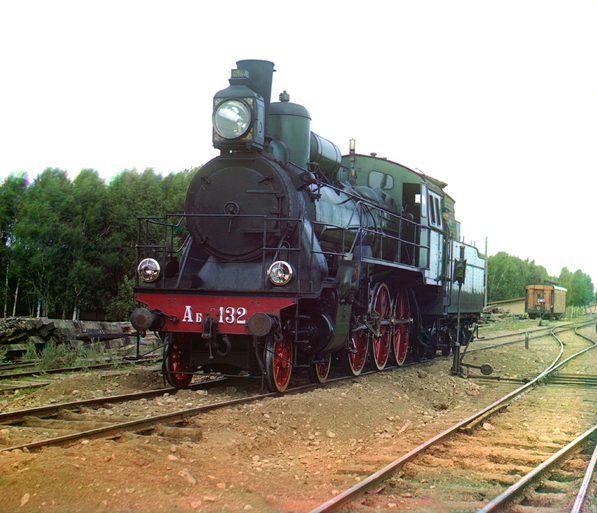 Sergei Mikhailovich Prokudin-Gorskii as part of his work to document the Russian Empire from 1909 to 1915.Cotton Field in Sukhumi Botanical Garden 1911
Sergei Mikhailovich Prokudin-Gorskii as part of his work to document the Russian Empire from 1909 to 1915.Cotton Field in Sukhumi Botanical Garden 1911 votre commentaire
votre commentaire Suivre le flux RSS des articles
Suivre le flux RSS des articles Suivre le flux RSS des commentaires
Suivre le flux RSS des commentaires
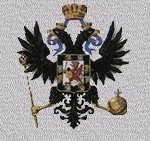

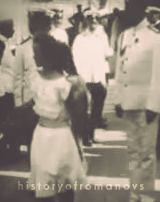
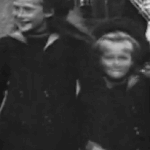
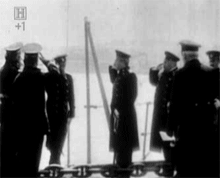

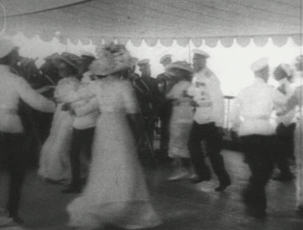




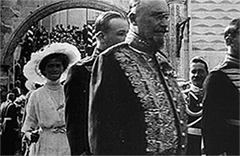 nos
nos




